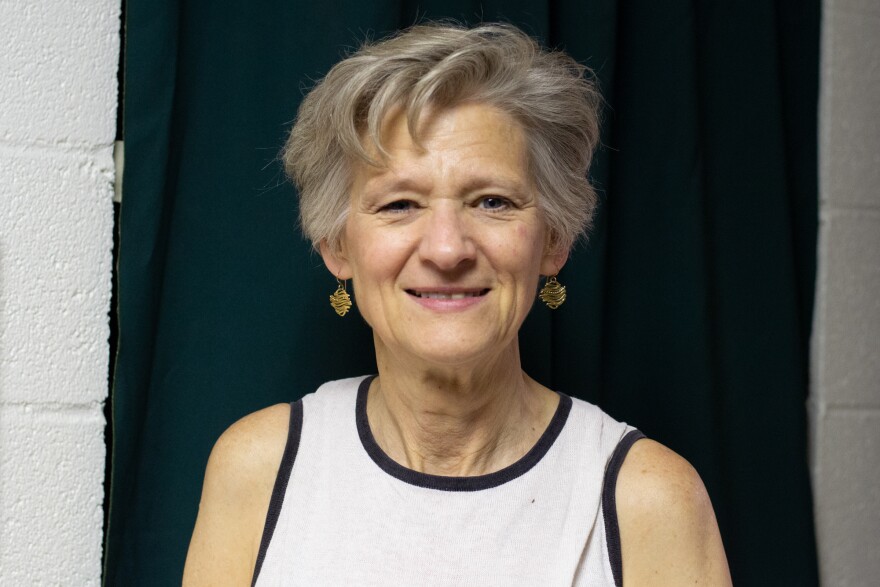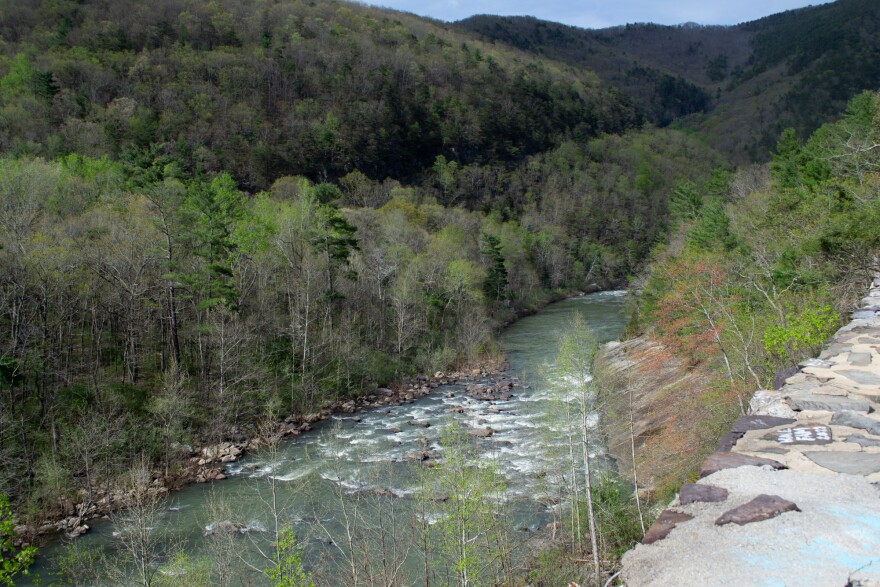Rockbridge County residents have formed the Maury River Alliance to address concerns over sediment pollution and potential flooding. WMRA's Randi B. Hagi reports.
[river rushing]
Goshen Pass in Rockbridge County is a gorge cutting through mountains lined with rhododendron and honeysuckle. At its base winds the Maury River, by turns, swollen with rapids, and eased into a wide, green ribbon running alongside a muddy current on the northern shore. It provides drinking water for parts of Lexington and the county, and draws tourism from swimmers, anglers, and kayakers. It's fed by the Calfpasture and Little Calfpasture rivers.
[spring peepers]
Less than a mile upstream from their confluence sits the Goshen Dam, and behind it, the 444-acre Lake Merriweather, which was constructed by the National Capital Area Council of the Boy Scouts of America in 1966. This lake has drawn river-lovers' ire for discharging high loads of sediment downstream. And some fear that the dam, if not maintained properly, could cause catastrophic flooding. Residents say the water quality was particularly bad last August.

LINDA LARSEN: The water was so high and it was so murky and green, as in algae green, that you couldn't swim. … I couldn't see my hand three feet in front of my face.
Linda Larsen, a local chiropractor, began talking about the water conditions with her neighbors. One of them got in touch with the dam operator, and found out the murky water was caused by the Boy Scouts partially draining the lake for maintenance. They do this every winter to clean debris out of the lake, but the severity and timing of last summer's discharge galvanized local residents to form the Maury River Alliance.

[people talking]
More than 125 people attended a public forum at the Rockbridge Baths Volunteer Fire Department earlier this month. Nesha McRae came from the DEQ's regional office to discuss Total Maximum Daily Loads, or TMDLs – which are the agency's clean-up plans for bodies of water that exceed pollution standards.
NESHA MCRAE: We identified sediment as the primary stressor to aquatic life in that little red line, that segment of the Little Calfpasture River below the dam.
Their study, conducted by Robert Brent of James Madison University, found that more than half of the sediment in Lake Merriweather was coming from "degraded riparian pasture land." That refers to overgrazed pastures close to the river's tributaries where exposed soil erodes into the water – or is directly chopped up by cattle getting into the streams. The DEQ encourages cattle exclusion fencing along the streams to prevent this pollution at its source.

Brent published another study last year, which found that turbidity – which measures how hazy the water is due to suspended particles – was eight times higher below the dam during the summer, and 25 times higher during the winter. I called McRae after the meeting to learn why the suspended sediment is so bad for aquatic life.
MCRAE: The plants that live in streams can't absorb sunlight, so they can't photosynthesize. … That can alter the amount of oxygen that's in the water, and it can also limit aquatic habitat. … And when you have a lot of suspended sediment in the water column, that can actually absorb heat energy, so your stream temperature can increase. … When that sediment that's in the water column settles out … then that really impacts all the aquatic insects that live on the stream bottom .
I called the Boy Scouts council to request an interview. Their chief communications officer said she'd pass on my information, but she was sure the DEQ would answer all of my questions.

Residents also shared concerns about the possibility of flooding if Goshen Dam were to break. The Department of Conservation and Recreation, which regulates dams, classifies it as having high hazard potential because of how narrow the pass is, and how many people live downstream. Justin Deel, the regional dam safety engineer, explained that the dam is currently in "fair" condition – meaning it's generally safe. But its bottom drain has been inoperable for at least 15 years.
JUSTIN DEEL: The requirement for the low-level drain is sort of a backstop, if you will, in case you get like a Hurricane Camille-type situation … a really significant rain system stalled over the area, and we could lower the lake and keep some of that flood water held back for as long as we can. … The main thing is preventing the dam from overtopping altogether. Because that is the worst-case scenario.
The Boy Scouts have to make a plan to fix it, and run through tabletop emergency scenarios with Deel, by the end of July to stay in compliance with the DCR. It's a catch-22, though – repairing or replacing it now will inevitably release many years' worth of built-up sediment.

Caught between this rock and hard place, those who live and play on the river just want it to be safe and clean. Linda Larsen first fell in love with the area in 1979, when friends took her and her husband, Eric Smeltzer, to Goshen Pass.
LARSEN: We moved that next weekend, and I've been here ever since. And Eric lived until four years ago, here in Rockbridge County, and that's where he's buried. … For many, many people I know, the trip to Goshen Pass, the trip to the Maury was the deciding factor on, "hey, yeah, I'll live here, I'll move here."
At the meeting's close, Larsen encouraged attendees to contact their state representatives to bring more attention – and perhaps funding – to these issues.



